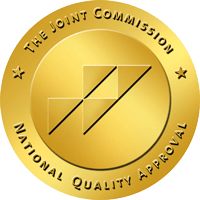Opiate addiction can include a physical dependency on Vicodin and OxyContin, which are among the most addictive painkillers. Addiction can cause you to experience troubling withdrawal symptoms and powerful cravings, making it hard to recover without the help of holistic pain management.
Tens of millions of Americans struggle with a substance abuse disorder, alcoholism and addiction each year. Despite more than 10% of Americans ages 12 and older meeting the criteria for a substance abuse disorder annually, less than half complete treatment. Addiction is a chronic disease that progressively worsens until you recover.
Opiate abuse rates have continued to increase rapidly, leading President Trump to issue a public health emergency declaration in 2017 in order to combat the opiate epidemic. Legislative changes, such as the Affordable Care Act, mandate health insurance companies to cover substance abuse treatment in the same manner that they cover treatment for medical conditions. These changes have made treatment more affordable and accessible.
The Most Addictive Painkillers
Opiate painkillers are derived from opium and are highly addictive central nervous system depressants. Painkillers treat:
- Chronic pain
- Traumatic pain
- Post-operative pain
- Chemotherapy pain
- Acute dental pain
Some of the most addictive painkillers are also among the most commonly prescribed medications in the United States. For example, OxyContin and Vicodin are among the 200 most prescribed medications despite having a high potential for abuse. Even if you take painkillers exactly as prescribed, you can develop an addiction.
This makes opiate painkillers especially dangerous, because most people don’t think they can be addicted to a medication if they are complying with medical advice and aren’t abusing their medication.
Even though opiate painkillers carry a high risk of addiction, they are sometimes necessary to manage pain. It is important to reach out for help when you first begin experiencing signs and symptoms of opiate painkiller addiction, which can include:
- Experiencing an increased tolerance
- Taking more painkillers than you are prescribed
- Acquiring painkillers illegally
- Running out of your prescription for painkillers early
- Engaging in drug-seeking behavior, such as doctor shopping
- Taking your prescription in a manner other than prescribed, such as inhaling crushed painkillers
Treatment Options
When you become addicted to opiates, you will experience withdrawal symptoms when you stop using. Symptoms can begin within 24 hours of your last use and can last for several days. If you develop an addiction to opiates and have chronic pain, holistic pain management strategies are commonly utilized during all stages of recovery. Learning how to cope with chronic pain, as well as negative emotions and cravings, is a central component of inpatient and outpatient treatment.
Evidence-based treatments like cognitive and dialectic behavioral therapy help you identify and change negative thoughts, feelings and actions. You can also learn healthy coping strategies, such as meditation, during treatment that can alleviate cravings.
Pillars Recovery Can Help
If you are struggling with opiate addiction, you are not alone. Many of the most addictive painkillers are commonly prescribed and highly accessible, making it easy to develop an addiction. Finding treatment early is the best way to achieve recovery. Contact us today at 866.782.0247 to learn more about your treatment options and how Pillars Recovery can help you beat addiction.






